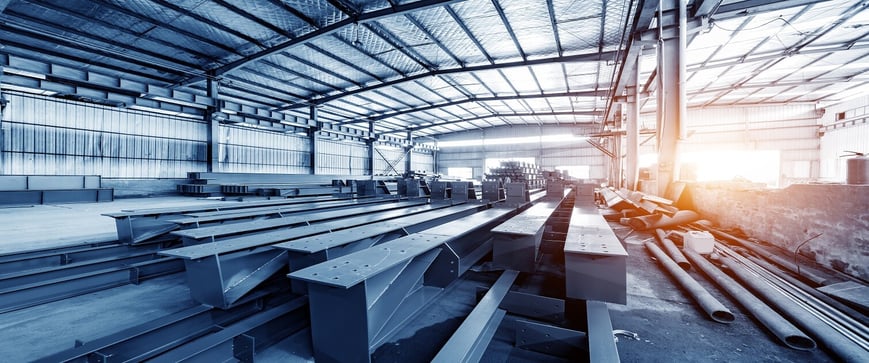
On March 12, 2025, the U.S. government enacted additional duties on steel and aluminum products under Section 232 of the Trade Expansion Act. Designed initially to safeguard domestic industries by levying tariffs on steel and aluminum products, the new regulations have significantly broadened the range of covered items. Impacted importers must grasp these intricate requirements to ensure proper duty payments are made and avoid potential penalties.
Section 232 Impacts
The Section 232 announcement fixed a 25% duty on steel and aluminum products from global origins, identified by finished good HTS classification. Steel and aluminum products in their base forms, classified in chapters 73 and 76, were included. In addition, derivative articles containing steel or aluminum identified by their finished good classification are impacted as well.
What’s New: Derivatives of Steel and Aluminum
The most significant change in the new regulations is the expanded definition of “derivative” articles. According to the updated guidelines from the U.S. Department of Commerce, certain products are now classified as derivatives of steel and aluminum, extending beyond just raw materials. This list includes items classified outside of Chapters 73 (Iron or Steel) and 76 (Aluminum) of the Harmonized Tariff System.
This change poses new compliance challenges for businesses that import or manufacture products containing these materials. With the inclusion of machinery and parts previously not classified as steel or aluminum articles, companies are actively working with their suppliers to understand the percentage of steel or aluminum content contained within their products.
Reciprocal Tariffs and Section 232: Key Exclusion Details
Importers must also note that reciprocal duties levied under IEEPA are exempted for products being imported subject to 232 duties. Importers should also note that 232 duties are not recoverable via Drawback.
The Two-Fold Application of Section 232 Tariffs
The application of Section 232 tariffs can be broken down into two key categories:
- Derivative Articles within Chapters 73 and 76: Articles within the annex outlined in FR 2025-02833 and Chapters 73 or 76 of the Harmonized Tariff System are subject to an additional 25% ad valorem duty, regardless of their country of origin. Examples include:
- 7326.90.8688 – Other Articles of Steel
- 7604.21.0010 – Hollow Profiles of Aluminum
- Articles Outside of Chapters 73 and 76: Products that do not fall under Chapters 73 or 76, such as specific machinery and components, can be subject to a 25% duty based on their steel or aluminum content. The annex lists these items, including.
- 8807.30.0060 – Other Parts of Aircraft
- 9403.20.0000 – Other Metal Furniture
The Importance of Supply Chain Transparency
Given the complexity of the new regulations, businesses must have a comprehensive understanding of their products, particularly the steel and aluminum content within their supply chains. The U.S. Customs and Border Protection (CBP) agency may request documentation that validates the source and material content of imported goods. To stay on the right side of compliance, importers must uphold accurate Bills of Materials (BOMs) and sourcing documents.
Penalties for Misclassification
The new regulations focus on identifying and penalizing misclassifications of imported goods. President Trump has directed Customs and Border Protection (CBP) to prioritize reviewing items on the derivative list and other steel-related products to identify potential violations.
If misclassifications result in the non-payment of Section 232 duties, the maximum legal penalties are enforced without consideration of any mitigating factors. Furthermore, CBP will inform the Secretary of Commerce if any attempts to alter steel derivative articles before importation are detected.
In addition to Section 232 duties, importers may face other tariffs, including Anti-Dumping and Countervailing duties, Section 301 tariffs, and those imposed under the International Emergency Economic Powers Act (IEEPA).
Our Recommendations for Compliance
At Tradewin, we strongly recommend that importers take proactive steps to review their current classification databases. Staying prepared ensures your products are classified correctly according to the updated regulations. With the complexity of these changes, it’s essential to work closely with a trade compliance expert to avoid any disruptions in your supply chain or costly penalties.
Our recommendations are:
- Review your classification database to ensure accurate compliance with the new Section 232 rules.
- Maintain up-to-date documentation of sourcing and materials in your supply chain.
- Be aware that penalties for misclassification will be severe, with no room for mitigation.
- Understand that Section 232 duties are in addition to other applicable duties.
For more information, please refer to the linked Federal Register notices regarding steel and aluminum imports, as well as CBP’s Section 232 Tariffs FAQ.
Contact Tradewin for our Expertise
Your business can confidently navigate the new Section 232 classifications and thrive in the global marketplace by staying informed and vigilant. Contact Tradewin for expert assistance in managing these new regulations and ensuring compliance.




